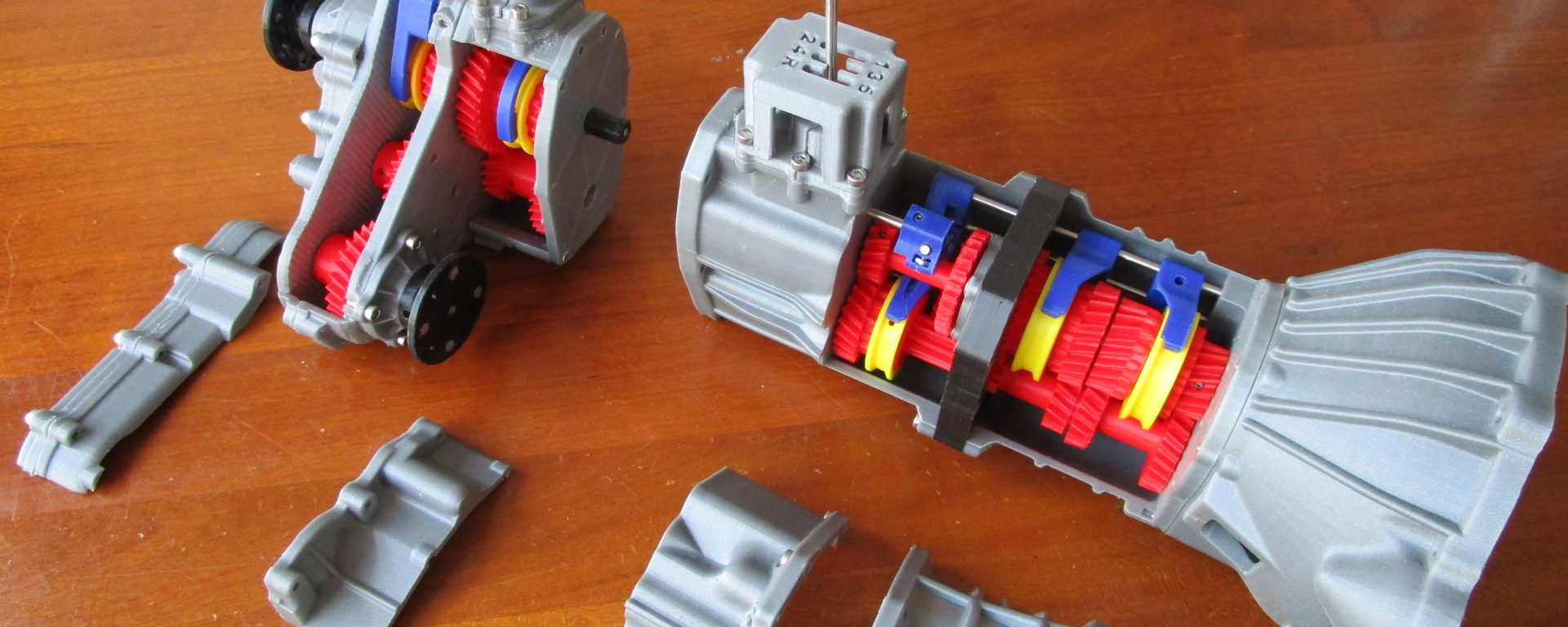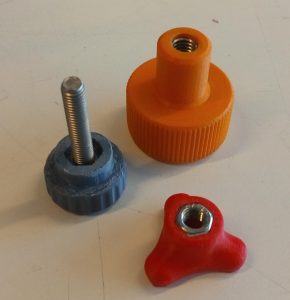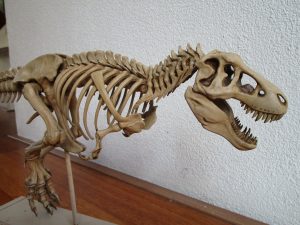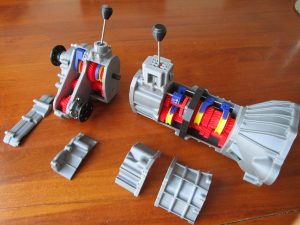During my work at Hukseflux Thermal Sensors I was introduced into the world of 3D printing. The fact that these machines can quickly and reliably convert concepts into physical products is a great source of inspiration. So much so, that I even purchased a second hand Ultimaker 2+ for use at home.
Professionally, the two Ultimaker 3D printers of Hukseflux are used by the R&D teams for prototyping and making assembly tools and jigs. Being part of one of those teams, I took part in the following activities:
- Converting CAD models into 3D printable parts to be able to test mechanisms in the real world. In order to achieve this. metal hardware was often required to get the desired function to work properly. For example, for a test with an adjustable mechanism, different style turning knobs are fitted with standard bolts, nuts or helicoils to form a durable thread:
- Designing tools and jigs, for example a reusable drilling templates for a curved metal part
- After building some experience, I became one of the employees who instructed new users to start working with the Ultimaker machines.
At home, I use my own printer for more elaborate projects, which required longer printing times and multiple parts which required assembly and finishing. Two example projects are:
- A 1:20 scale T-rex skeleton, a design provided by Makerbot (also see this Thingiverse website). This model consists of a big number of parts which proved challenging to print. The ribs for example, stood upright on the buildplate and were prone to be knocked over during printing. Some editing of the original files was needed to successfully complete all the parts. Assembly was done by using epoxy glue. For this model I have chosen to prime, sand, paint and detail the parts to achieve an aged look to the skeleton:
- A 35% scaled down functional model of a Toyota W56 gearbox, designed by Eric Harrell (see his website). It uses metal hardware (nuts, bolts, bearings, springs and rods) to achieve key functions. The different parts are either screwed together or, like the covers, held in place with small magnets. The model also includes a transfer box, a separate module found in 4WD vehicles. In this project, I used different colors PLA filament to make the different functions of the components more clear:
The list of current and future projects is long and contains among others:
- Toyota 22RE engine on the same scale as the gearbox above (also by Eric Harell)
- Scale model of the city center of Leiden using LIDAR data
- 3D model of my house
- Tests with 3D scanning with the use of DSLR images and replicating the item
- Lithophane lamp



